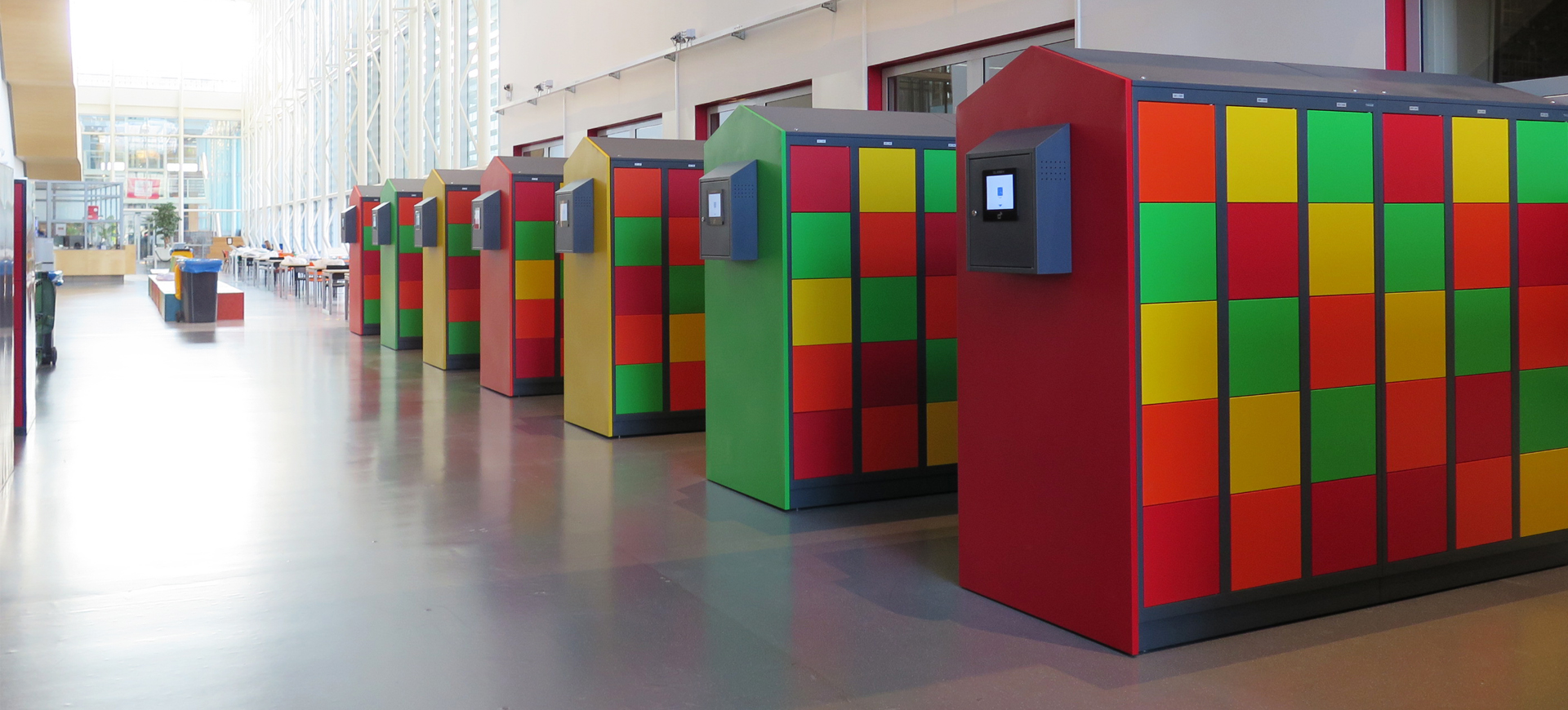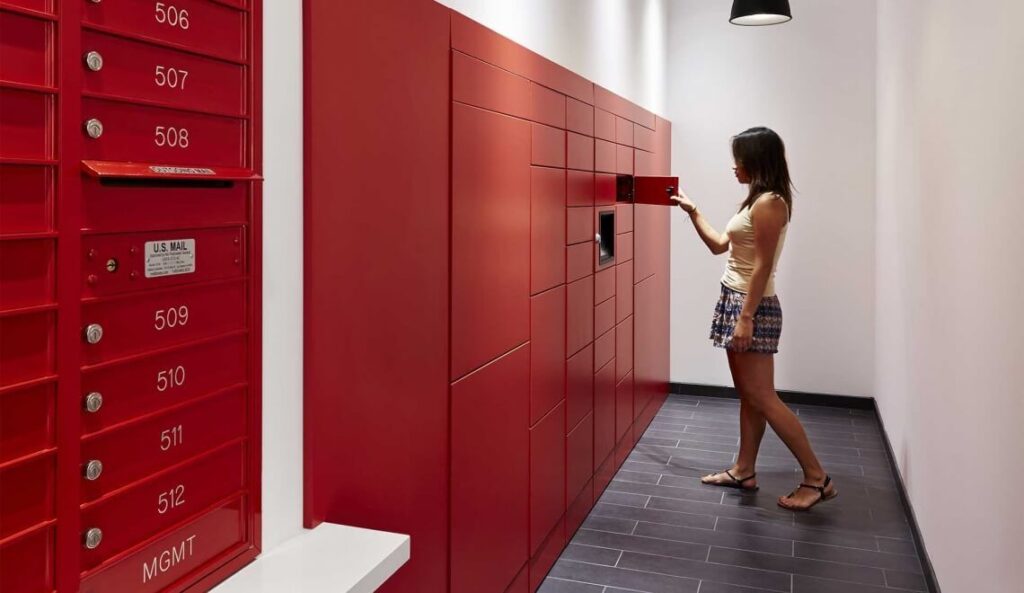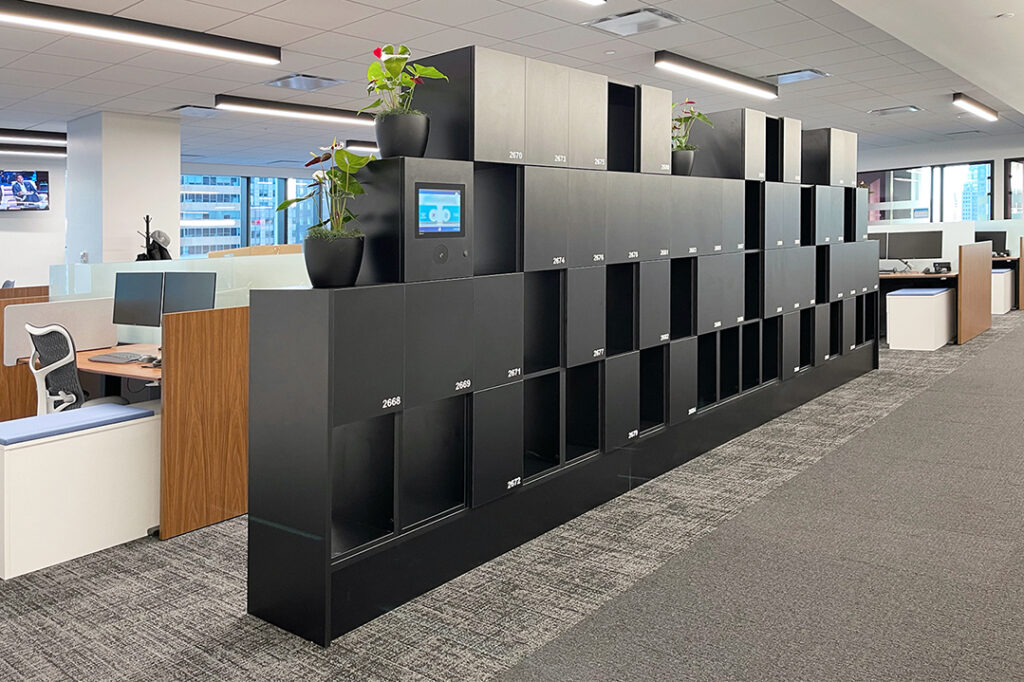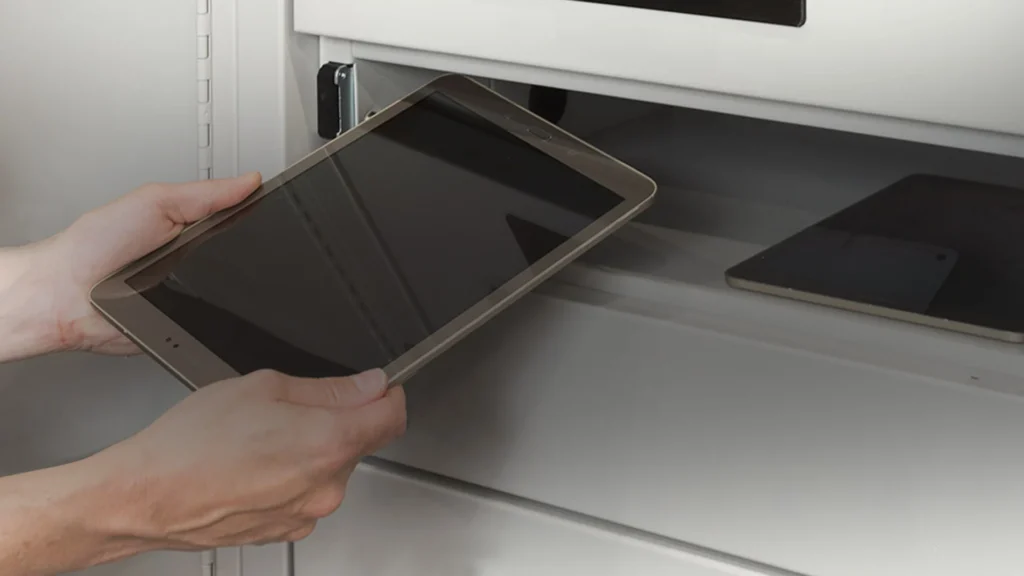
In today’s fast-paced world, businesses are constantly seeking innovative solutions to streamline their operations and enhance security. Smart lockers have emerged as surprisingly versatile tools that can address various challenges across industries, from small local hotels to multinational corporations. In this comprehensive guide, we will explore what smart lockers are, their core components, and the ten compelling reasons why your business needs them. By the end of this article, you’ll have a clear understanding of how smart lockers can revolutionize your organization. Get the newest technology in smart lockers from Elockers.
Table of Contents
What Are Smart Lockers?

Source: parcelhive.net
At the heart of the smart locker concept lies smart technology, which integrates computers and sensors to enable self-monitoring and data analysis. A smart locker, also known as an intelligent locker, is a secure storage and distribution system that incorporates such technology. These lockers can dynamically manage asset sign-outs, flag items in need of repair, and even track unusual usage patterns. Unlike traditional lockers, smart lockers offer enhanced security and control over access to assets, preventing unauthorized use and theft.
Core Components of Smart Lockers
Lockers
At the heart of any smart locker system are the lockers themselves. These lockers are designed to be reliable and secure storage units, with compartments to hold various assets. Smart lockers come in various configurations and materials, such as ventilated metal or clear high-impact polycarbonate doors, catering to the specific needs of different industries.
Authentication Panel
The authentication panel is the first component that makes a locker “smart.” It is the entry point for users seeking access to the lockers. By requiring individual identification, smart lockers provide tighter control over who can access specific equipment or assets. While a basic PIN code can be used for authentication, it may not be the most secure option. In higher-security environments, businesses can opt for more sophisticated authentication methods like swipe cards, smartphone apps, or biometric scans. These advanced methods significantly reduce the risk of unauthorized access.
Content Surveillance
Smart locker technology goes beyond identifying users; it must also track individual assets to ensure proper inventory management. Content surveillance is accomplished through various means, with passive RFID (Radio Frequency Identification) tags being a popular choice. These tags can be attached to or embedded in assets, allowing the smart locker system to read and confirm that the correct item is taken or returned. Some smart lockers also utilize USB charging cables integrated into the lockers. When devices like tablets or smartphones are plugged in for charging, their identification is relayed to the lockers, promoting accountability and deterring asset theft.
Management Software
The data collected from smart lockers is invaluable for optimizing asset management and understanding usage patterns. Management software acts as the central hub that compiles and presents this data in an easy-to-read dashboard. Administrators can access customizable reports and transaction details, helping them make informed decisions about asset allocation, maintenance, and compliance. The management software is a critical component that provides actionable insights, enhances security, and improves overall efficiency in asset management processes.
10 Benefits of Using Smart Lockers

Source: workplacelockers.com
Reduced Labor Costs
One of the most significant advantages of smart lockers is their ability to automate time-consuming asset management tasks. This automation minimizes the need for manual intervention, freeing up staff to focus on more productive and strategic activities. As a result, businesses can optimize their workforce and reduce labor costs.
Workforce Enablement
Smart lockers empower employees by providing self-sufficient access to the equipment they need. Instead of waiting for senior staff to unlock or approve requests, employees can quickly and independently retrieve the required assets from smart lockers. This workforce enablement enhances productivity and eliminates unnecessary delays.
Improved Operations
Beyond traditional storage capabilities, smart lockers offer advanced features such as feedback and communication functionalities. This flexibility allows businesses to create new workflows that align with Lean management practices, streamlining operations and optimizing efficiency.
Save Time
Time is a precious resource, and smart lockers can save a considerable amount of it. By strategically locating smart lockers in high-traffic areas where assets are frequently needed, employees can easily access equipment without walking long distances. The automation of transactions also ensures speedy asset retrieval and recording, eliminating tedious manual processes.
Efficient Decentralized Management
Centralized management is a powerful feature of smart lockers. Administrators can have fine-grain control over how and when specific assets are accessed and used throughout the organization. This decentralized approach empowers various teams or departments to manage their equipment efficiently, reducing dependencies on a single point of contact.
Reduced Asset Losses
Human errors and oversights are common causes of asset losses in manual asset management systems. With smart lockers, transaction logging is automated, leaving no room for such errors. Content surveillance also ensures that the correct asset is returned, preventing mix-ups and misplacements. Furthermore, smart lockers can send alerts to supervisors when assets are not returned on time, enabling prompt action to recover misplaced items.
Automated Regulatory Compliance
Businesses that deal with regulated assets or controlled substances often face stringent compliance requirements. Smart lockers simplify compliance management by providing automated reporting and customizable data retrieval. Access terminals equipped with cameras can record staff photos during transactions, adding an extra layer of accountability.
Insight into Device Usage
Wired and RFID asset tracking within smart lockers provides businesses with detailed insights into when, where, and how assets are used. Over time, this accumulated usage data can help identify performance trends, optimize asset allocation, and identify potential business process improvements. Smart lockers, in essence, become valuable sources of business intelligence.
Always Ready
Smart lockers are designed for high-traffic environments and emergency situations. Even during electrical outages, smart lockers continue to operate thanks to battery backups. When network access is restored, the lockers seamlessly update the management software with any stored data, ensuring data integrity and continuity.
Easily Customizable
The versatility of smart lockers allows them to be customized to suit various storage needs. For instance, Real Time Networks collaborated with an airline that needed to track and secure food prep knives used by their staff in airports. The AssetTracer RFID tags were embedded in the knife handles, enabling the system to automatically verify when each knife was taken or returned, send alerts for missing knives, and maintain a compliance log. This example illustrates how smart lockers can be adapted to unique storage requirements, ensuring that businesses get precisely what they need.
Many Possible Applications

Source: realtimenetworks.com
Physical Mobile Device Management
In hectic environments like warehouses, businesses rely on handheld scanners for inventory management. Smart lockers with content surveillance capabilities help reduce losses and improve maintenance processes, keeping productivity at its peak.
Evidence Management
Law enforcement agencies deal with the critical task of managing forensic evidence. Smart lockers streamline the chain of custody tracking, ensuring 24/7 surveillance and enhanced evidence management.
Weapon Storage
Smart lockers provide strict access control and accountability for firearms and less-than-lethal weapons, supporting the safety and security of personnel.
Regulatory Compliance
Smart lockers help businesses meet regulatory demands by providing efficient asset tracking and reporting capabilities.
Kit Component Checks
In fields like emergency medicine, where kit components like EMT medicine bags are vital, smart lockers automate component checks for accuracy and compliance.
Parcel Protection
Retail pickup services are growing in demand, and smart lockers offer a secure solution for temporary asset storage, ensuring safe and convenient retrieval.
Conclusion
Smart lockers have emerged as indispensable tools for modern businesses, offering efficiency, security, and improved asset management. Their adaptability makes them suitable for organizations of all sizes, from local enterprises to large corporations. By understanding the core components and benefits of smart lockers, you can make informed decisions and integrate these innovative solutions into your business processes. Embrace the future with smart lockers and unlock a world of possibilities for your organization’s success.
Remember, this guide provides a comprehensive overview, but each business has unique needs. Reach out to our experts to explore how smart lockers can be tailored to optimize your specific workflows and ensure seamless efficiency and security. Embrace the power of smart lockers and elevate your business to new heights!







